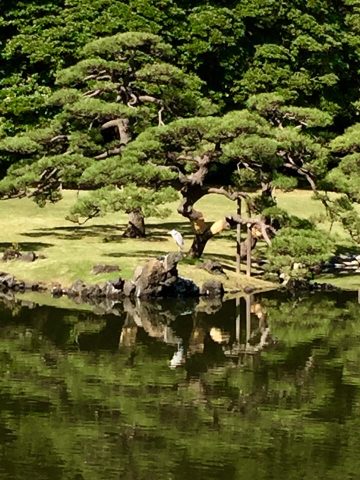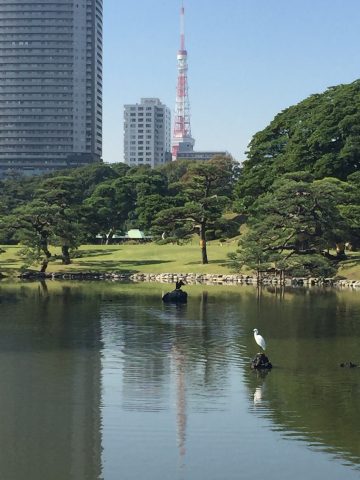Why the Japanese Love Michael Jackson
By YURI KAGEYAMA
“MY-keh-rooh,” as Japanese fans adoringly call him, never had to worry about being perceived a wacko-weirdo here _ a culture where neoteny, or the celebration of juvenile traits, and the cross-gender persona, as in effeminate men and masculine women, are at the core of this nation’s highest art forms.
Japanese are used to seeing in its top artists the very traits that some Westerners found so creepy and appalling in Michael Jackson.
It’s not surprising Japanese, long known for their worship of American musicians and movie stars, came out screaming and cheering at sell-out stadiums during Jackson’s “Thriller”-day heights of the 1980s.
But Japanese came out screaming and cheering even in recent years when Jackson was in Tokyo for shopping sprees at gadget stores, visits to Disneyland and Joypolis, an amusement park run by game-maker Sega, and tightly orchestrated events for fans, where he didn’t sing a single note or glide a single Moon-walk.
He was MY-keh-rooh, the gloved man-child, sweet, innocent, pure _ and oh, so “kawaii.”
Kawaii literally translates as “cute.” But the Japanese has none of the connotations of sexuality associated with the word in the West.
An old man, a subcompact car, something as innocuous as an umbrella, digital camera or kitchen utensil, even something grotesque like a horror-film creature can be potentially kawaii.
Kawaii is about the emotion evoked by a child from its parent, and so is linked in the Japanese mind with the most basic and honorable instinct for the preservation of the species.
It is about love. And it is virtuous.
Kawaii-ness is the keystone of artistic sensibilities from as far back as the Edo Period, prevalent in Hokusai woodblock prints. It is very much alive today in “manga” comics filled with doe-eyed heroes, as well as in the Mickey-Mouse parody sculptures and drawings of Takashi Murakami.
By Western standards, kawaii is embarrassingly frivolous _ like an adult being caught clutching a stuffed animal.
But it’s taken very seriously in Japanese art.
So the King of Pop cavorting on amusement-park rides, cuddling Bubbles the chimp, collecting dolls and playing with children are far more easily accepted as normal adult behavior in Japanese culture.
It is aesthetically almost a modern-day “Tale of Genji,” a floating-world quest for the essence of beauty in a child.
Fans worshiped Jackson not only for his obviously dazzling singing and dancing talents.
As neoteny believers, they were able to take at face value without the cynical doubts, more typical of the Western intelligentsia, his “We Are the World” messages on peace and spirituality.
Jackson could do no wrong as a kawaii guy with his soft velvety voice and shy quiet mannerisms, even as his nose changed sizes and his skin changed tones, no matter.
Take any Japanese MJ fan. Ask him or her whether Jackson is kawaii. And the answer would be a definitive “Yes.”
Jackson was a genius at perpetually staying the child. Even in his final photos, he looks pretty kawaii, especially for a man in his 50s.
Jackson was a master at blurring social barriers, and his denials of such definitions went beyond just age: Black, he looks white. Male, he looks so pretty he is asexual.
That is another reason why Jackson has endeared himself to the Japanese psyche.
A womanly male is about as high as one can get in the pinnacle of Japanese art, as evident in the world of Kabuki, where all roles, including those of women, are played by men.
As a counterpoint to this male-oriented theater is the world of Takarazuka, where all roles, including those of men, are played by women.
Japan is still such a sexually divided society, despite the recent advancement of women, people enjoy the escape that art offers in seeing categorizations turned upside down.
Perhaps it can be said that social definitions are so rigid in the mainstream an artist, by definition, is expected to defy them.
In Kabuki, the denials of convention extend to age. An 80-year-old master routinely plays a teen-age village damsel, and a proper Japanese won’t blink an eye.
Akihiro Miwa is an example of a highly respected artist who has made his fame on being a transvestite, the kind of character more common in San Francisco Finnochio’s in the West, not the acclaimed works of Yukio Mishima and Shuji Terayama, in which Miwa was the star.
In his early years, Miwa still looked more or less like a man but wore makeup. These days, he wears evening gowns, sports blonde curls and speaks in the language of women. Japanese love him and seek him out for career advice as though he is a shaman.
Jackson appears rather sedate next to the bejeweled Miwa or the 80-year-old Kabuki master.
Jackson’s death was big news in Japan. But the national mourning was not a splashy loud affair. Fans came out to buy the CDs they still didn’t have in their collection. They watched his videos together at Tower Records. They just wanted to be there, they said, to share that moment with others of like minds. Never mind they had the videos at home.
To the fans, Jackson was a beautiful person.
They became almost weepy when they talked about the allegations of child molestation he had endured. It worked out as a a boon for Jackson that Japanese tend to be mistrustful of the justice system. There are just too many cases of wrongful imprisonment. The first ever jury trial started only in 2009, the year of Jackson’s death.
In one high-profile case, Toshikazu Sugaya, a bus driver, served 17 years of a life sentence after being convicted of charges of murdering a 4-year-old, because of police profiling him as a pedophile, as well as because of coerced confessions that experts say are common in this nation’s police investigations.
Sugaya was released in 2009, after a long legal struggle, and only after DNA tests proved his innocence. Japanese suspect there are many like Sugaya in the prisons, and he was just lucky he had DNA tests.
Jackson was acquitted of all charges in 2005.
Media reports surfaced shortly before his death that Jackson had shown an interest in a young Japanese gymnast and had wanted to meet her.
Perhaps they would have married, some speculative but excited reports suggested _ if only he hadn’t died.
It would have been a marriage made in heaven for Japan.
In true exaltation, we could have witnessed Jackson obliterate yet another painful divisive barrier _ that of insider vs. outsider, or the Japanese vs. the “gaijin” foreigner.
By taking a Japanese wife, he would have almost turned Japanese, becoming one of us.

